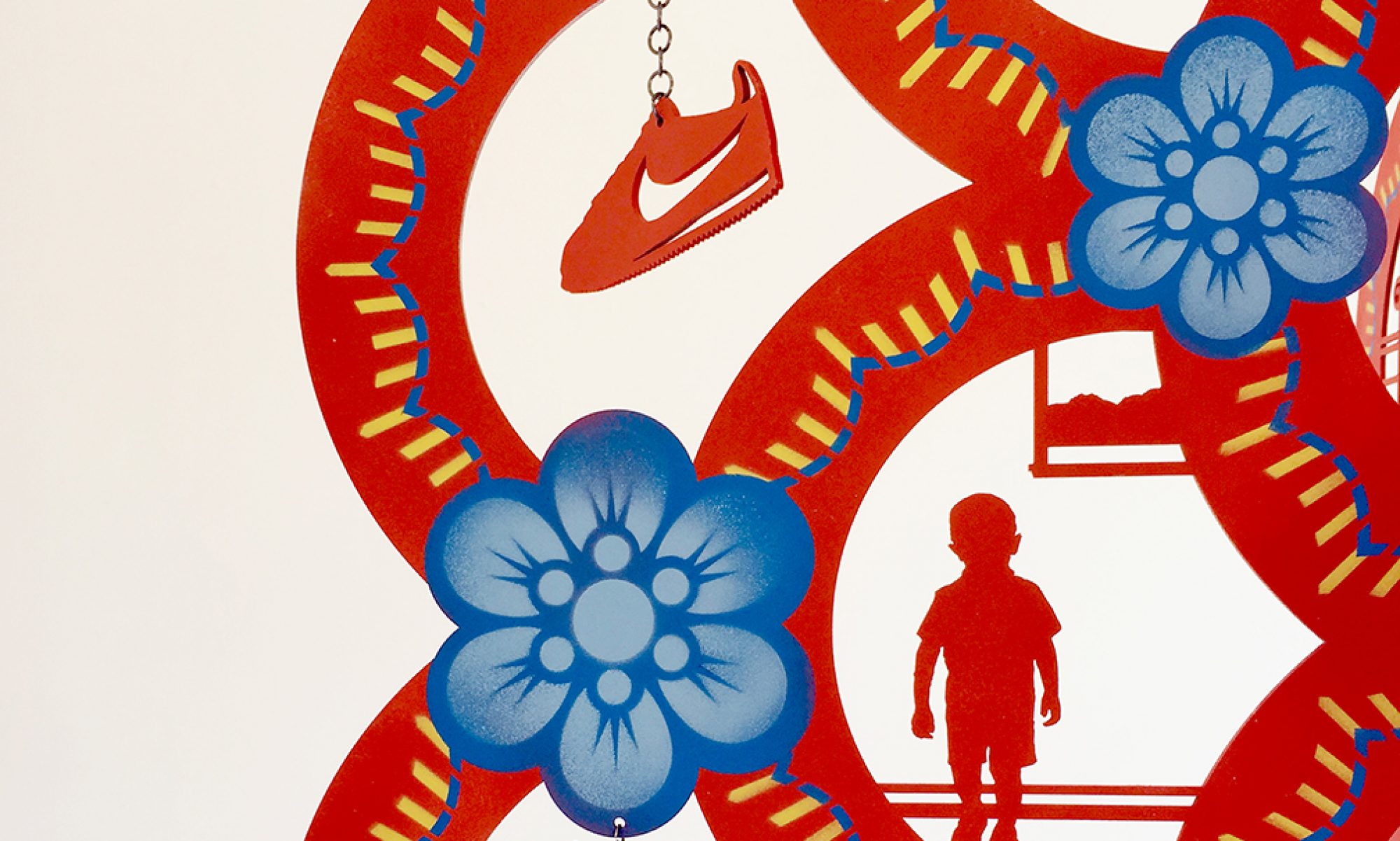Magallanes’ work, which includes painting, mobiles, sculpture, and video, is informed by the social and environmental issues of his upbringing. Conceptually the work is created from an “elsewhere” rather than allowing for an identity that is based on the “othering” of cultural and historical signifiers. The historian Jose Rabasa defines the space of “elsewhere” as a “neuter space that avoids the mirroring effect the category of the Other always carries with respect to the Same”. Magallanes finds this an important basis for the work as it allows the work to exist as an entity that is not reactionary to western culture, but rather autobiographical of a parallel experience.
The work correlates the connection between colonial institutions and modern day institutions. Drawing connections between the Tlacuiloque, Pre-columbian scribes, and Chicano/a/x artists. Both living in, adapting to and documenting a plurality of worlds with the ability to not only inhabit but act upon these multiple worlds. The Zapatistas motto is “a world where many worlds are possible”. This comes from Pre-colombian worldviews that have always allowed for multiple worldviews. A positionality that speaks not only to sustained struggles against colonialism but also of a preservation of culture and traditions through resistant text. By incorporating historical, cultural and contemporary iconography the work draws connections over hundreds of years, collapsing linear narratives and opening history and literature to multiple readings.
While the work specifically addresses a Chicano experience it does so from a positionality that allows for conversations about colonialism and the role institutions in shaping and maintaining dominant narratives.
